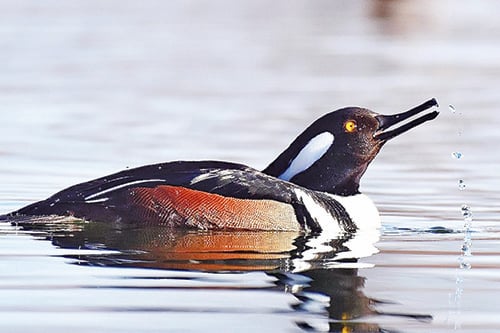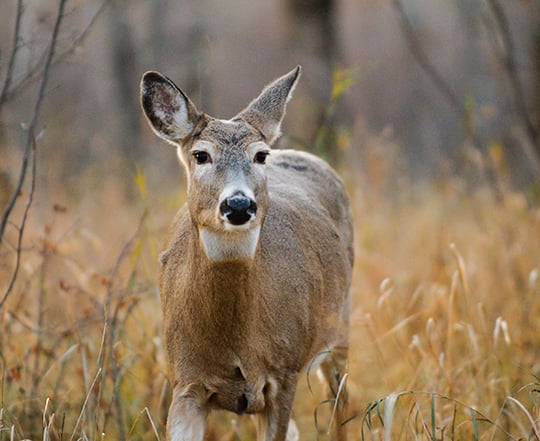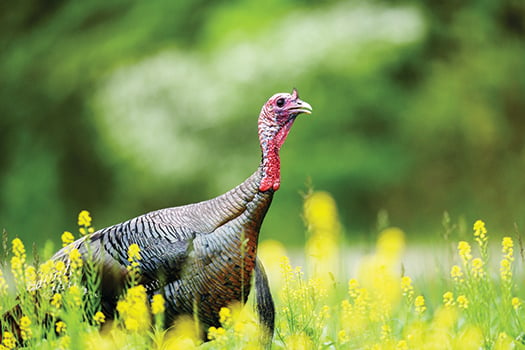Species Spotlight: Do you know about hooded mergansers, the duck of many names? – Outdoor News

If there wasn’t a photo with this story would you be able to identify the duck if I were to only describe it by some of its common or regionally associated names: fish duck, sawbill, spikebill, sharpy, fuzzhead, frog duck, and a host of others? Would you have been able to tag them as a hooded merganser?
Some yes, others, like me, the answer would be a big no.
Many merganser sightings are of them out on a lake, and that goes for most of my sightings. That is until one day when it all changed and my love for this beautiful duck grew to gargantuan proportions.
It was late winter, and I was photographing mink that were utilizing a small open-water area which was created by a bank beaver (a beaver which has built its lodge up into the bank). I had spent three days there already with incredible success with the mink.
It was on that fourth day, however, when it all changed. Hoodies tend to migrate in smaller flocks when compared to other species of waterfowl, and on that particular day it was a small, mixed sex group of hooded mergansers that flew in. I sat just 15 yards away and that is when I witnessed the incredible beauty of these birds, both males and females.
RELATED CONTENT FROM OUTDOOR NEWS:
Commentary: Bird, animal names fraught with historical and ‘cutesy’ perils
Efforts to change names of birds named after people divisive topic among ornithologists
Can bobcats help ‘clean up’ CWD in deer herds?
The male hoodie has a striking white crest that typically lays flat but when in courtship display (as these guys were) or when agitated, the white crest is in full display. Its body is blackish with a whitish breast with two black stripes down the side. Females lack the white crest with theirs being a reddish brown in color. Body color is a light gray-brown. When in flight both sexes display a white wing patch.
The smallest of the mergansers (16 to 19 inches long) to commonly occur in Illinois, they have a thin bill which has tooth-like serrations which aids in the grasping of prey as they dive for fish, crawfish, insects, and small amphibians.
I had the privilege of hearing the males call out during their courtship display. Small grunts and croaks came from the males while the females generally remained silent.
Hooded mergansers are a common migrant in Illinois with some spending the entire year. Some will nest in the state, but this bird is not considered a common breeder.
As far as nesting, hoodies and wood ducks are the two most common Illinois ducks to nest in cavities, although another cavity-nester, the black-bellied whistling duck, is becoming much more common in the state. While they prefer nesting in trees, they will also use artificial nest boxes if a more suitable location is not found.
Tree nesting sites can be anywhere from 15 to 50 feet high. Hens will lay from 8 to 12 white eggs, sometimes even more. Females will incubate the eggs for 29 to 33 days with the ducklings leaving the nest by taking a deep plunge to the forest floor at just one day old.
Hooded mergansers also practice “brood parasitism” where they will lay their eggs in nests of other ducks, both their own species and others.
We all give praises to our favorite ducks but I believe there is nothing more beautiful than hooded mergansers.
This article originally appeared in the Outdoor Illinois Wildlife Journal.






